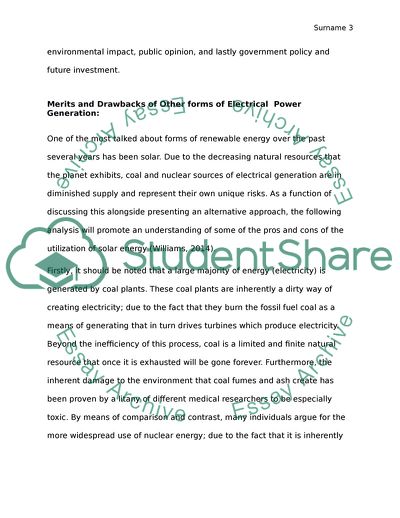Cite this document
(Wind Energy: the Costs and Benefits of Harnessing Power to Generate Electricity from Wind Energy Essay Example | Topics and Well Written Essays - 5000 words, n.d.)
Wind Energy: the Costs and Benefits of Harnessing Power to Generate Electricity from Wind Energy Essay Example | Topics and Well Written Essays - 5000 words. https://studentshare.org/engineering-and-construction/1836101-the-costs-and-benefits-of-harnessing-power-to-generate-electricity-from-wind-energy
Wind Energy: the Costs and Benefits of Harnessing Power to Generate Electricity from Wind Energy Essay Example | Topics and Well Written Essays - 5000 words. https://studentshare.org/engineering-and-construction/1836101-the-costs-and-benefits-of-harnessing-power-to-generate-electricity-from-wind-energy
(Wind Energy: The Costs and Benefits of Harnessing Power to Generate Electricity from Wind Energy Essay Example | Topics and Well Written Essays - 5000 Words)
Wind Energy: The Costs and Benefits of Harnessing Power to Generate Electricity from Wind Energy Essay Example | Topics and Well Written Essays - 5000 Words. https://studentshare.org/engineering-and-construction/1836101-the-costs-and-benefits-of-harnessing-power-to-generate-electricity-from-wind-energy.
Wind Energy: The Costs and Benefits of Harnessing Power to Generate Electricity from Wind Energy Essay Example | Topics and Well Written Essays - 5000 Words. https://studentshare.org/engineering-and-construction/1836101-the-costs-and-benefits-of-harnessing-power-to-generate-electricity-from-wind-energy.
“Wind Energy: The Costs and Benefits of Harnessing Power to Generate Electricity from Wind Energy Essay Example | Topics and Well Written Essays - 5000 Words”. https://studentshare.org/engineering-and-construction/1836101-the-costs-and-benefits-of-harnessing-power-to-generate-electricity-from-wind-energy.


